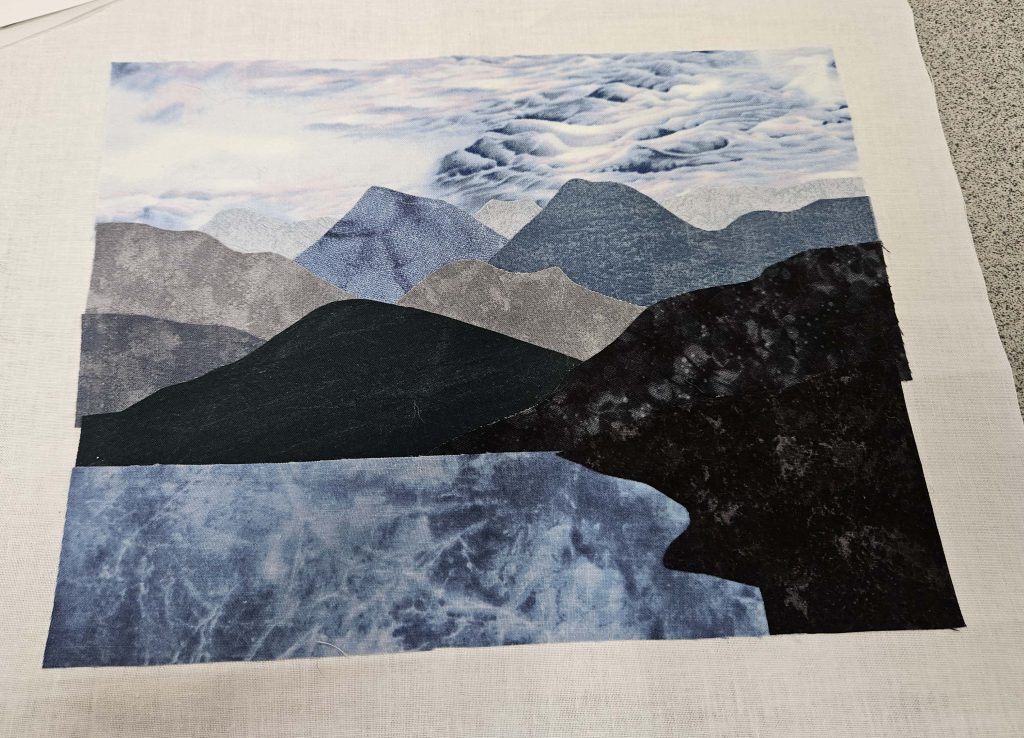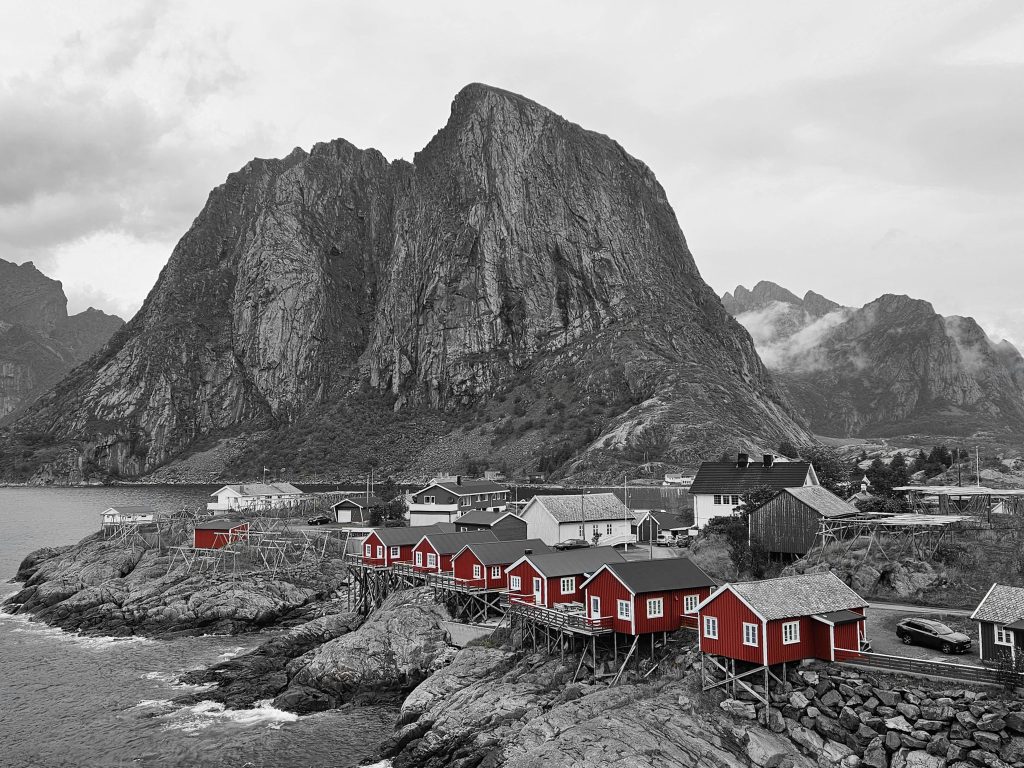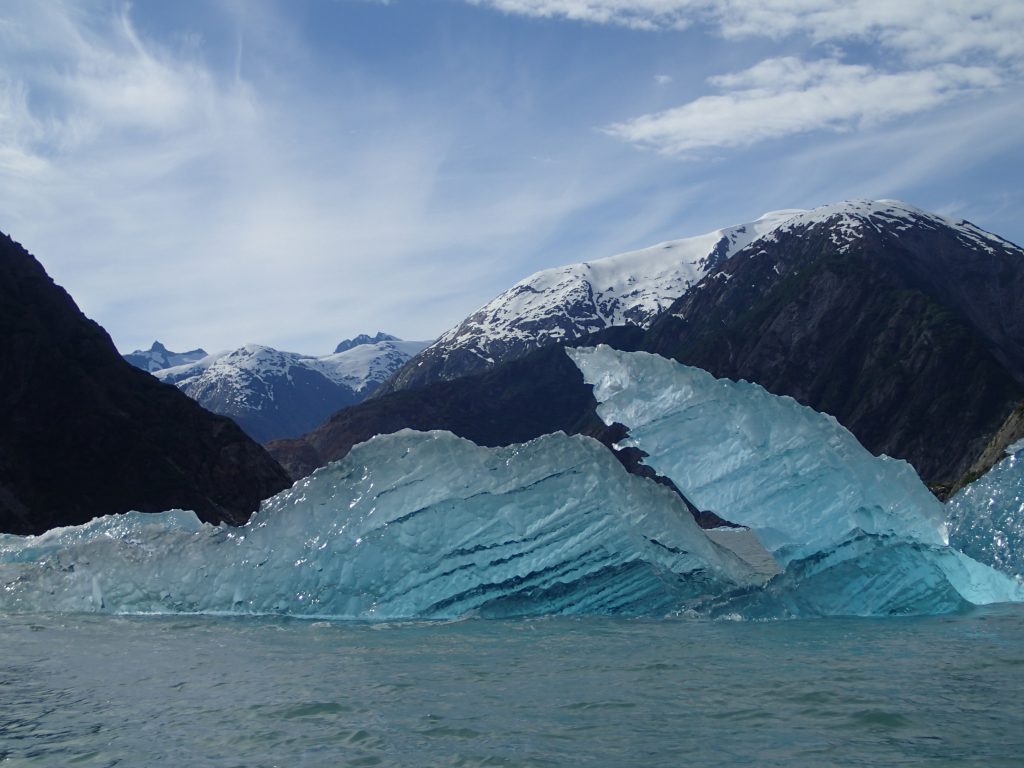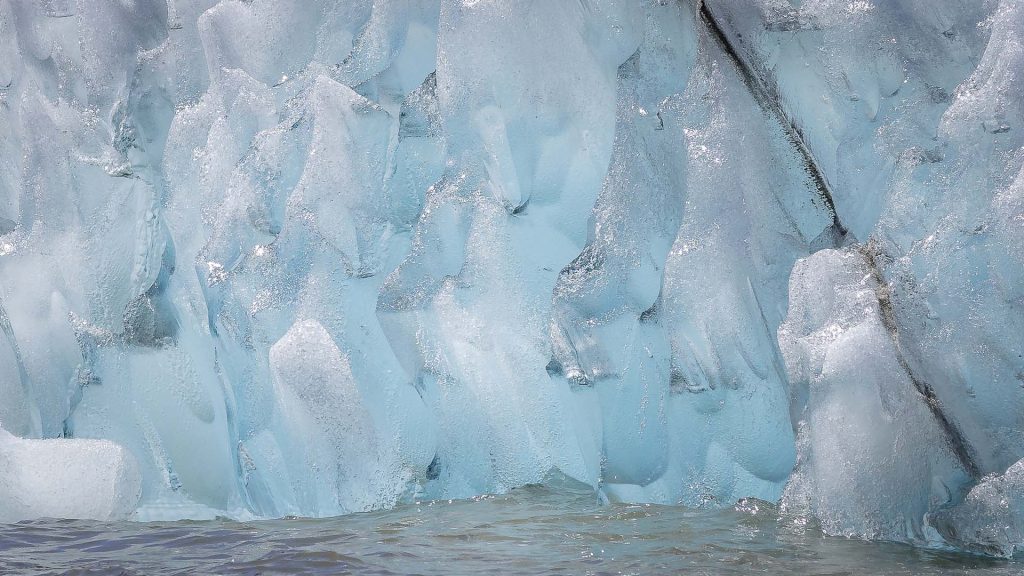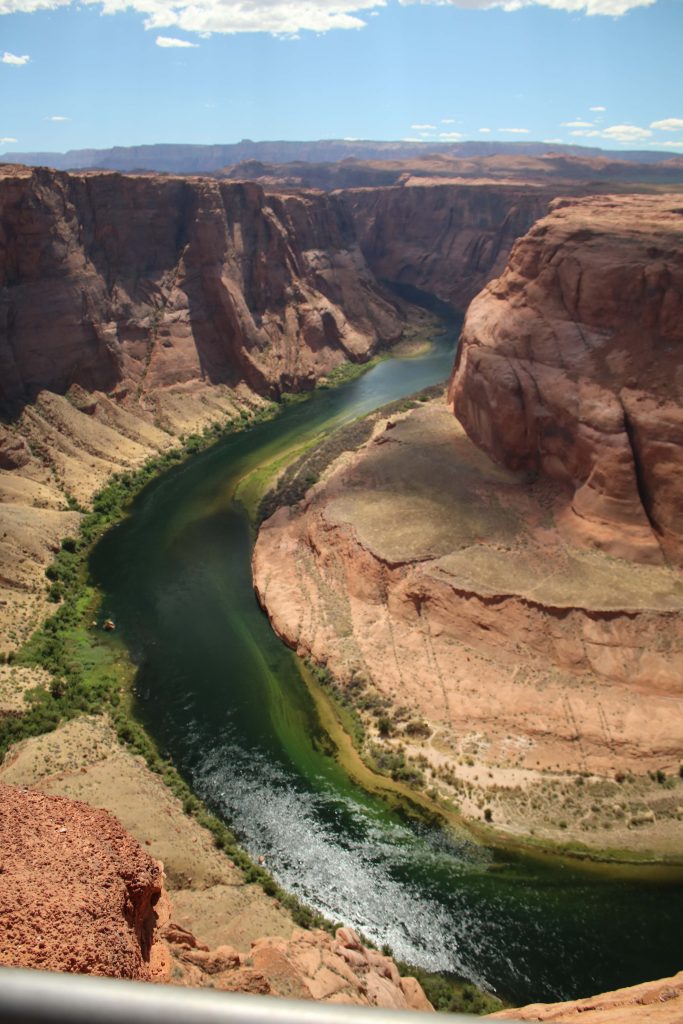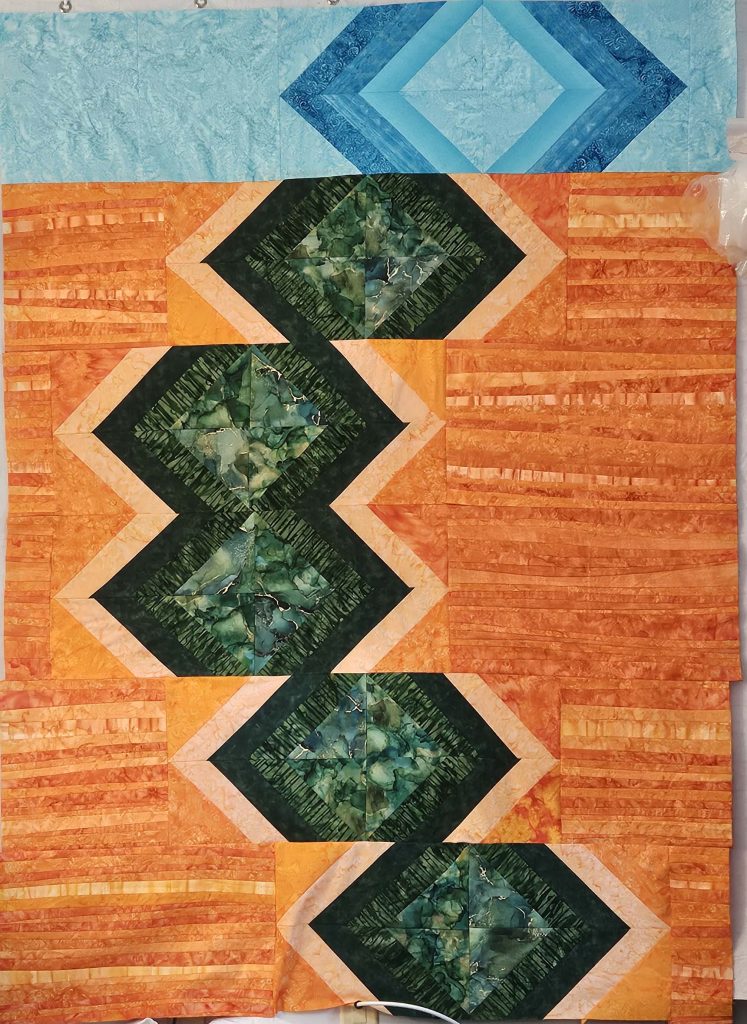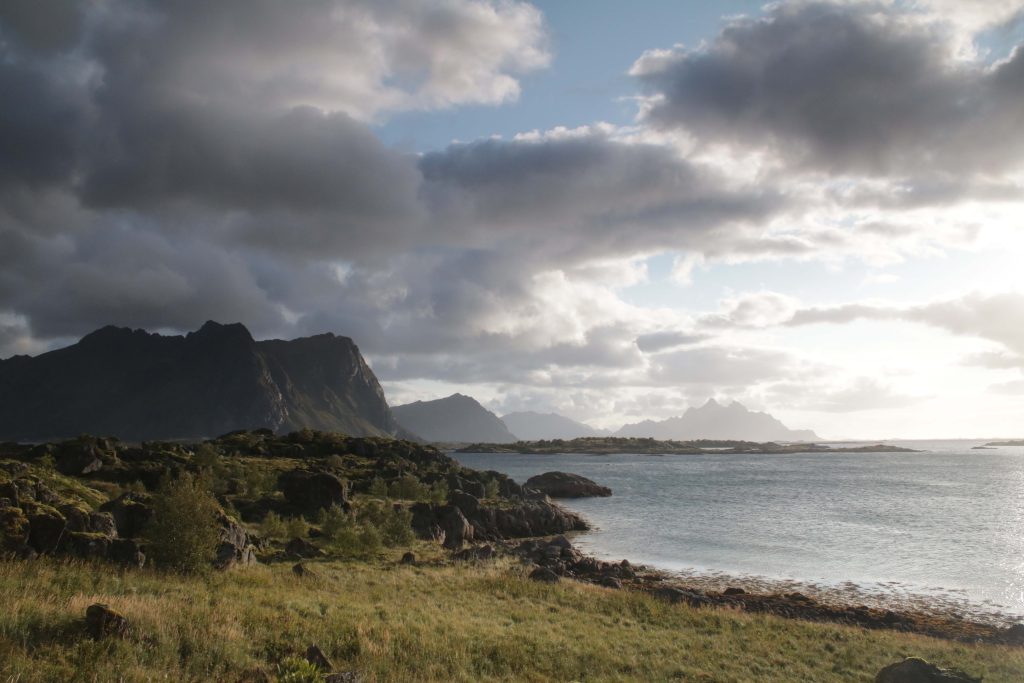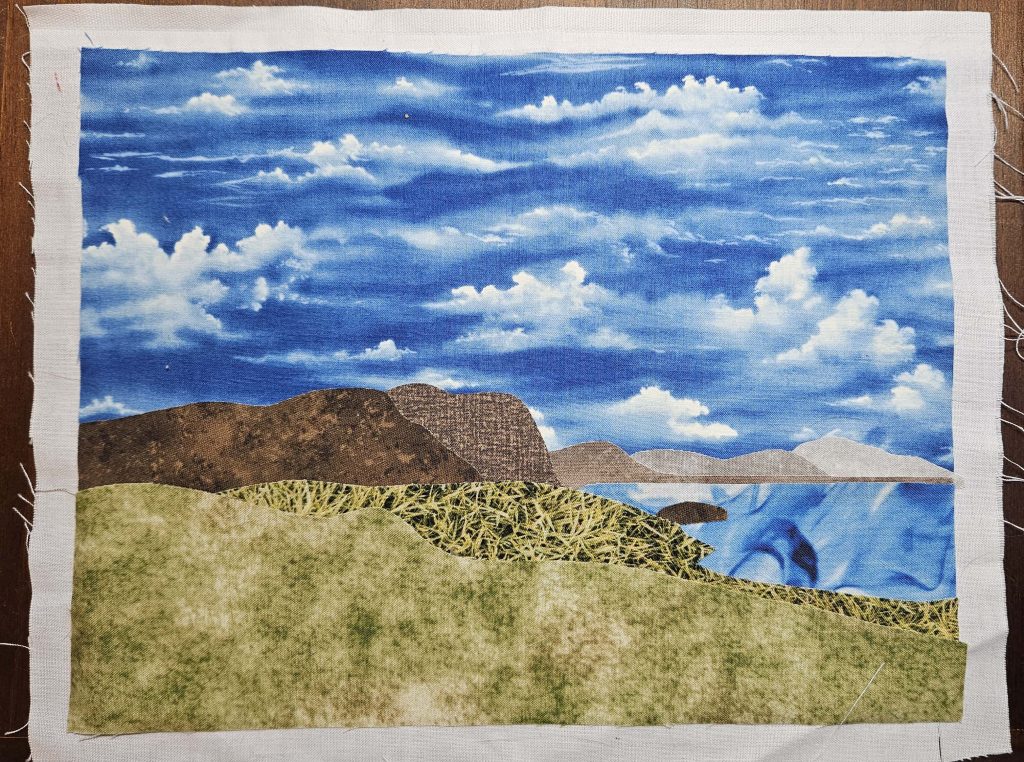My guild has a Wednesday night Zoom meeting each week, just to hang out and work on whatever project we’re working on. I decided that I’d see if I could get more done on the Tracy Arm iceberg quilt. I ended up going to the quilt store beforehand to find the border/binding fabric. I took the quilt with me to get the border fabric (as one does), and I noticed that some of the iron-on adhesive had come unstuck, so I decided that I would need to sew things down. While I was there, I got some monofilament thread to sew down the iceberg.
So I spent the Zoom call sewing the fabric pieces down. Because I am remarkably consistent in my choices of colors for things in general, I already had all of the regular thread I needed to be able to sew all of the pieces other than the iceberg. The colors weren’t exact for all of the fabrics/threads, but they were close enough that the difference simply adds dimension rather than blending in seamlessly. I actually really like the sewing – it brings out some things that hadn’t been clear before.
Sewing with the monofilament on the iceberg was a challenge. I used regular thread in the bobbin, which may have been a mistake. Some of the stitching was perfect – it did exactly what I wanted it to do, and it’s invisible unless you look up close. But then there were occasional sections where the tension decided to go wonky, so the bobbin thread shows on top. I’m not quite sure what happened there, but I may need to make a bobbin of the monofilament thread just to finish it up. I gave up before I got to that point. I pulled out and sewed over one particularly long stretch where the bobbin thread was on top, and the same thing happened the second time I sewed over it, so I threw in the towel because I was frustrated and it was getting late. But I’ll go back at it at some point soon.
The fabrics for the borders – both the green for the inner border that you see in the picture I posted in the last blog entry and the darker blue I got for the outer border – went into the laundry when I got home from the quilt store, so I’ll tackle the border some other day. I do wash all of my fabrics before I do anything with them. I work with reds occasionally, and I have screwed up a quilt because the red ran in the laundry (even after I washed it!), so I do try to get everything laundered before I use it. It doesn’t really make a difference what you do – you just have to be consistent at it.
One more decision that I’m going to have to make: the quilt top is stiff in places because of the iron-on adhesive. But the iron-on adhesive is not all over the top of the quilt, so some places are just…fabric, while other places are layers of fabric with the iron-on adhesive. If I’m just going to hang the quilt on the wall, that’s not a big deal – no one will feel it regularly and realize that it’s different. But if I plan on doing something else with it, I might need to figure out how to make the feel of the entire top consistent. My inclination is that I’ll simply hang the quilt on the wall so it’s not a big deal, but I do have to make sure that decision is the right one before I sandwich the quilt.

